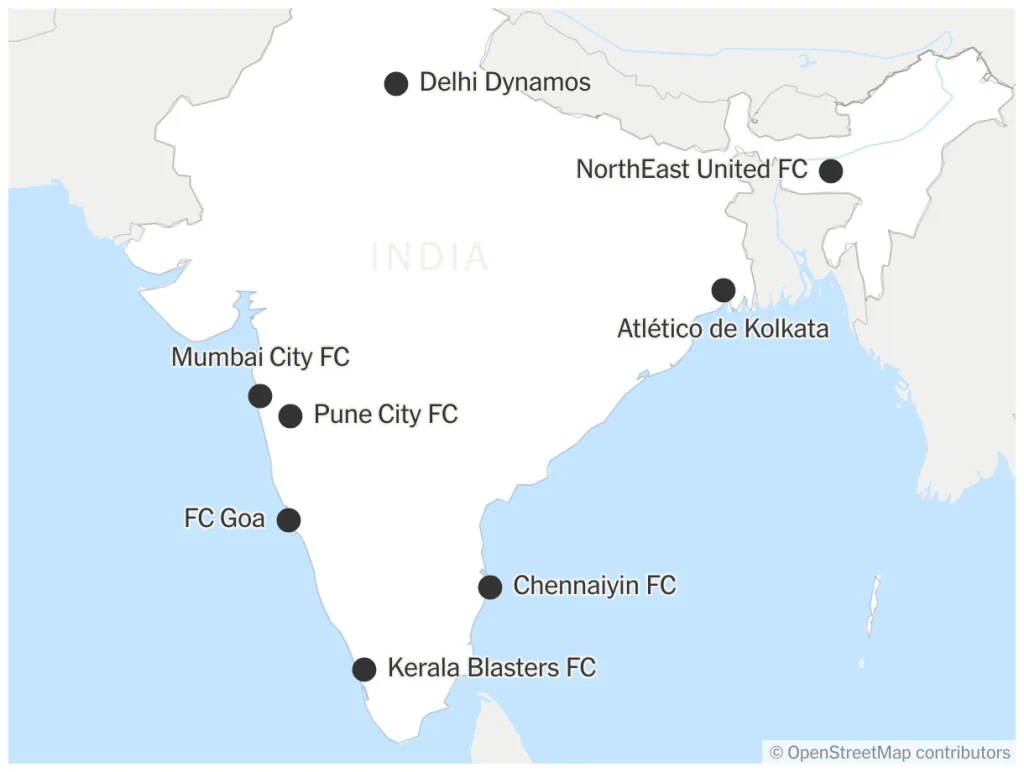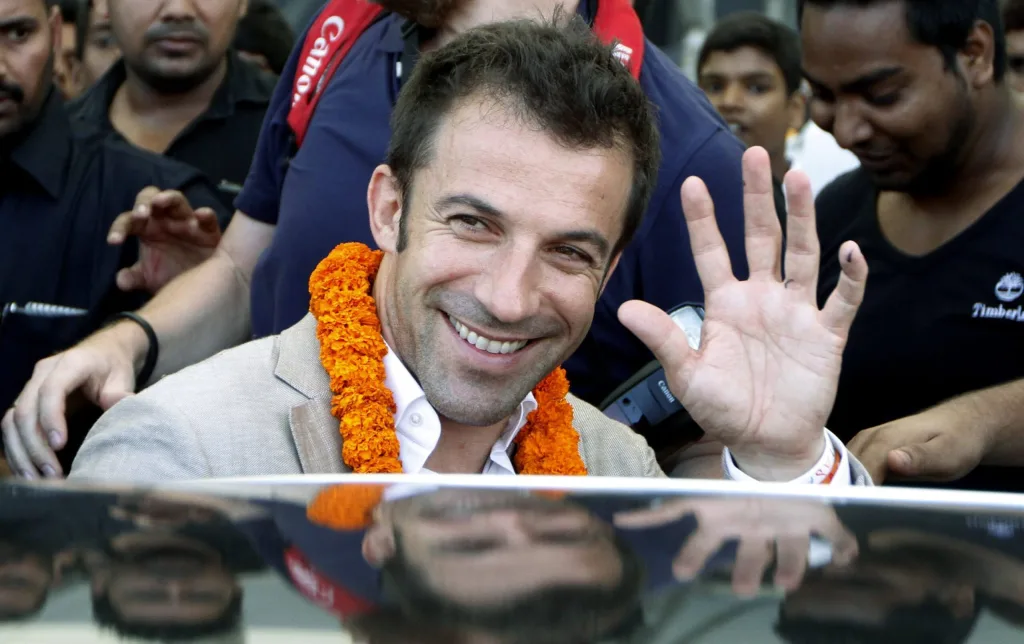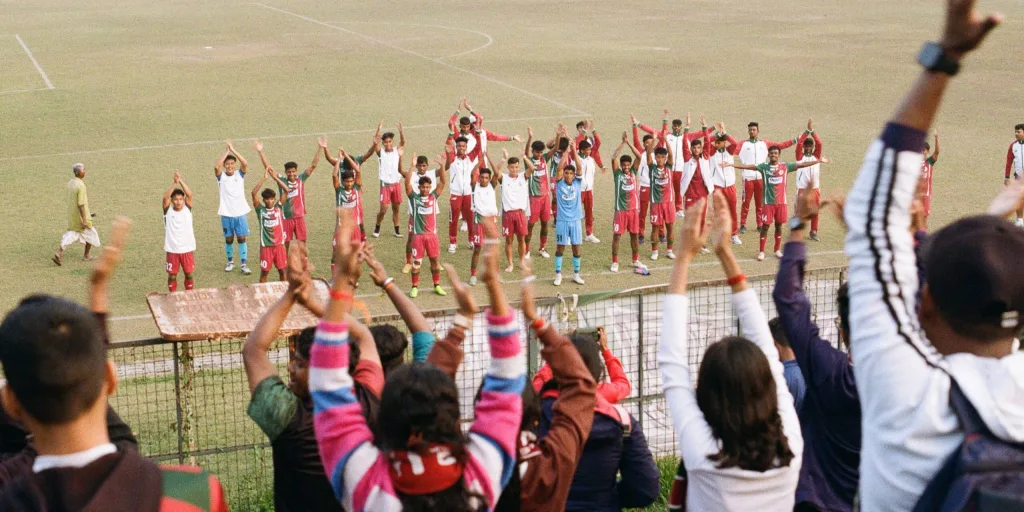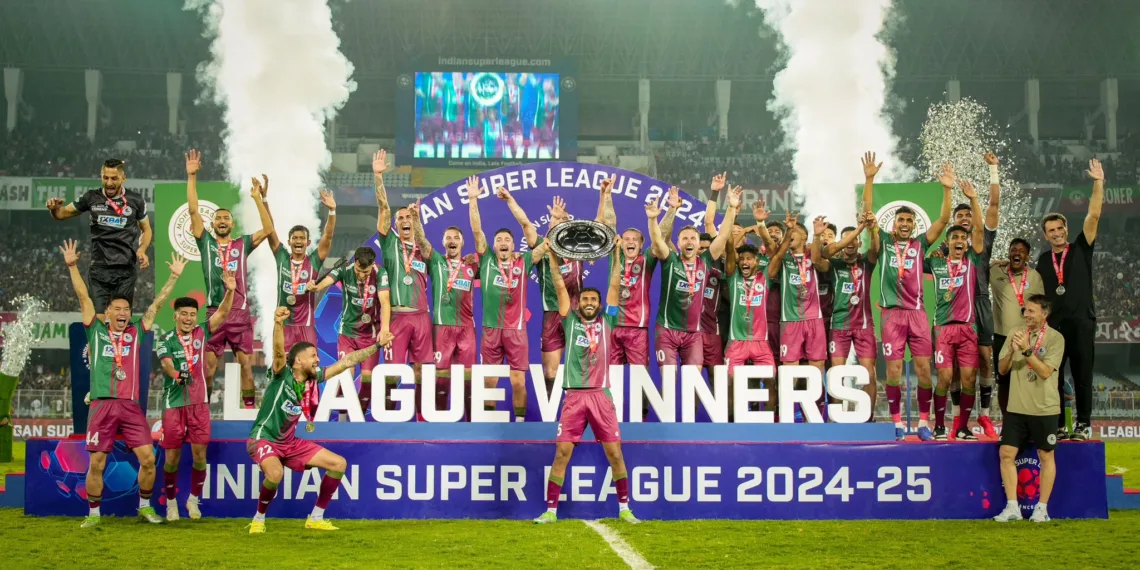As the final whistle blows at the Mohammedan Sporting Ground, a 5-0 scoreline cements victory for Mohun Bagan’s under-17 squad. The fans, however, are in no hurry to leave. In the away section, a group of passionate supporters—Mariners de Xtreme—continue chanting, drumming on makeshift instruments, and reveling in the moment. Their dedication highlights a growing sentiment: football in India is more than just a sport; it’s a culture.

Yet, for decades, India was perceived as an outlier in the global footballing landscape. The prevailing narrative suggested that while football had conquered North America, China, the Middle East, and Australia, it had yet to truly embed itself in the world’s most populous country. However, is that perception still accurate, or is India finally awakening to the global football phenomenon?
Table of Contents
The Perceived Indifference
Sepp Blatter, FIFA’s former president, once called India a “sleeping giant” of football. The assumption that cricket’s dominance left little room for other sports became an accepted belief. However, in regions such as Kolkata and Kerala, football arguably holds greater significance than cricket.
“There is a huge amount of passion for football in India,” says Rajrup Biswas, founder of Off Guard Sports. “Particularly here and in Kerala, in the south, you can probably make the case that football is more popular than cricket. We are a football culture.”
Despite its passionate following, for much of its history, India lacked a structured, professional football league that could harness this enthusiasm and propel the sport forward.
A New Dawn – The Indian Super League
Everything changed a decade ago when India’s wealthiest family, led by Mukesh Ambani, took the initiative to revolutionize football in the country. With Reliance at the helm, the Indian Super League (ISL) was born, modeled after the Indian Premier League’s (IPL) formula of big investments, star power, and mass appeal.

The ISL launched with unparalleled fanfare. Opening night saw 70,000 fans pack Salt Lake Stadium in Kolkata. Bollywood stars, cricket legends, and business tycoons invested in franchise teams, while European clubs like Atletico Madrid and Manchester City took operational control of select sides. Footballing icons such as Alessandro Del Piero, David Trezeguet, and Nicolas Anelka graced the inaugural season. The goal was simple: elevate Indian football to international standards.
Traditional Clubs and ISL’s Initial Resistance
However, the league’s foundation wasn’t universally welcomed. Kolkata’s storied clubs—Mohun Bagan, East Bengal, and Mohammedan Sporting—were left out of the ISL’s early years, relegated to the second-tier I-League. Many traditionalists saw this as an erasure of the sport’s legacy.

“We would go to the games, of course,” says Shubham Chatterjee, a leader of Mariners de Xtreme. “If Luis Garcia is playing Del Piero in your home city, why not go? But it was more to pass the time. We were still here, supporting Mohun Bagan (in the I-League) at the weekend.”
Growth and Challenges in the ISL Era
A decade later, the ISL has expanded to 13 teams, incorporating historical clubs like Mohun Bagan and East Bengal. Jamshedpur FC has constructed India’s first dedicated football stadium, while Bengaluru FC and Punjab FC have prioritized youth development.

Yet, the glitz of ISL’s early years has faded. The days of high-profile global superstars signing multimillion-dollar contracts are gone. The league’s biggest name today is Jason Cummings, an Australian forward who featured in the 2022 FIFA World Cup. The promise of international-grade football has given way to a more modest reality—clubs struggling financially, operating at losses, and in some cases, ceasing to exist.
Pune FC and Delhi Dynamos no longer exist in their original forms, while other franchises teeter on the edge of sustainability. Youth development, despite incentives, remains underfunded, limiting the talent pipeline necessary to elevate Indian football on the world stage.
The Hyderabad FC Case Study – A Reflection of Indian Football
Dhruv Sood, a devoted Liverpool supporter and a lawyer by profession, always wanted to contribute to Indian football. His opportunity came last year when BC Jindal Group acquired Hyderabad FC.
Hyderabad had won the ISL Cup in 2022 but was in disarray under its previous owners. Players terminated their contracts, financial woes mounted, and the club faced transfer bans. Within 48 hours of acquisition, Sood’s team had to assemble a squad primarily of young Indian talent and free agents.
“We said, ‘Come to Hyderabad. You might have to take a pay cut, but you’ll play, and if you play your way into a better offer somewhere else, we won’t stand in your way’,” recalls Sood.
Hyderabad survived the season, but the challenges reflect the broader struggles of Indian football—ambition meets financial instability, and long-term planning often takes a backseat to immediate survival.
Is Football Conquering Its Final Frontier?
The ISL has succeeded in increasing football’s visibility in India. Television viewership has grown, and attendance remains strong in Kolkata, Kerala, and the Northeast. Yet, beyond these heartlands, the sport’s presence is fragile. Outside of a few select cities, ISL matches often fail to attract substantial local interest.

Some argue that the ISL has been a “missed opportunity.” While cricket’s IPL revolutionized the sport’s infrastructure and nurtured young talent, the ISL has yet to achieve the same for football. The league’s reliance on corporate funding means sustainability is uncertain. If financial backers pull out, many clubs risk collapsing.
The Road Ahead
For India to establish itself as a serious footballing nation, structural reforms are necessary. Clubs must invest in grassroots development, scouting, and world-class training facilities. A more inclusive and competitive domestic football pyramid, integrating I-League clubs more effectively, could strengthen the overall ecosystem.
Additionally, Indian football needs a flagship moment—a qualification for the FIFA World Cup or a historic AFC Asian Cup run—to ignite a nationwide shift in perception. The country has the passion, but without systemic improvements, its potential remains unfulfilled.
Football in India is no longer a dormant force—it is awake, growing, and evolving. However, whether it can truly conquer its “final frontier” depends on its ability to move beyond momentary enthusiasm and build an enduring, sustainable footballing culture.
The fans in Kolkata’s Maidan, chanting long after the match ends, prove that the love for football is deeply rooted in India. What remains to be seen is whether the nation can channel this passion into a global footballing powerhouse.
Read More: No Rest for the Best: The Relentless Football Calendar Pushing Players to the Limit
FAQs
Is football gaining popularity in India?
Yes, football is growing rapidly in India, with increasing viewership for European leagues, the rise of the Indian Super League (ISL), and improved grassroots development programs.
What challenges does football face in India?
Football in India struggles with limited infrastructure, lower financial backing compared to cricket, and the need for better youth development and scouting systems.
How is the Indian Super League (ISL) impacting football’s growth?
The ISL has increased football’s visibility, attracted international players, and improved competition levels, helping to boost domestic talent.
Can India qualify for the FIFA World Cup soon?
While India is making progress, qualifying for the World Cup remains a challenge due to tough competition and the need for stronger grassroots development.
What role does India’s massive population play in football’s future?
With over 1.4 billion people, India has immense potential to become a football powerhouse if talent identification, investment, and grassroots initiatives improve.








